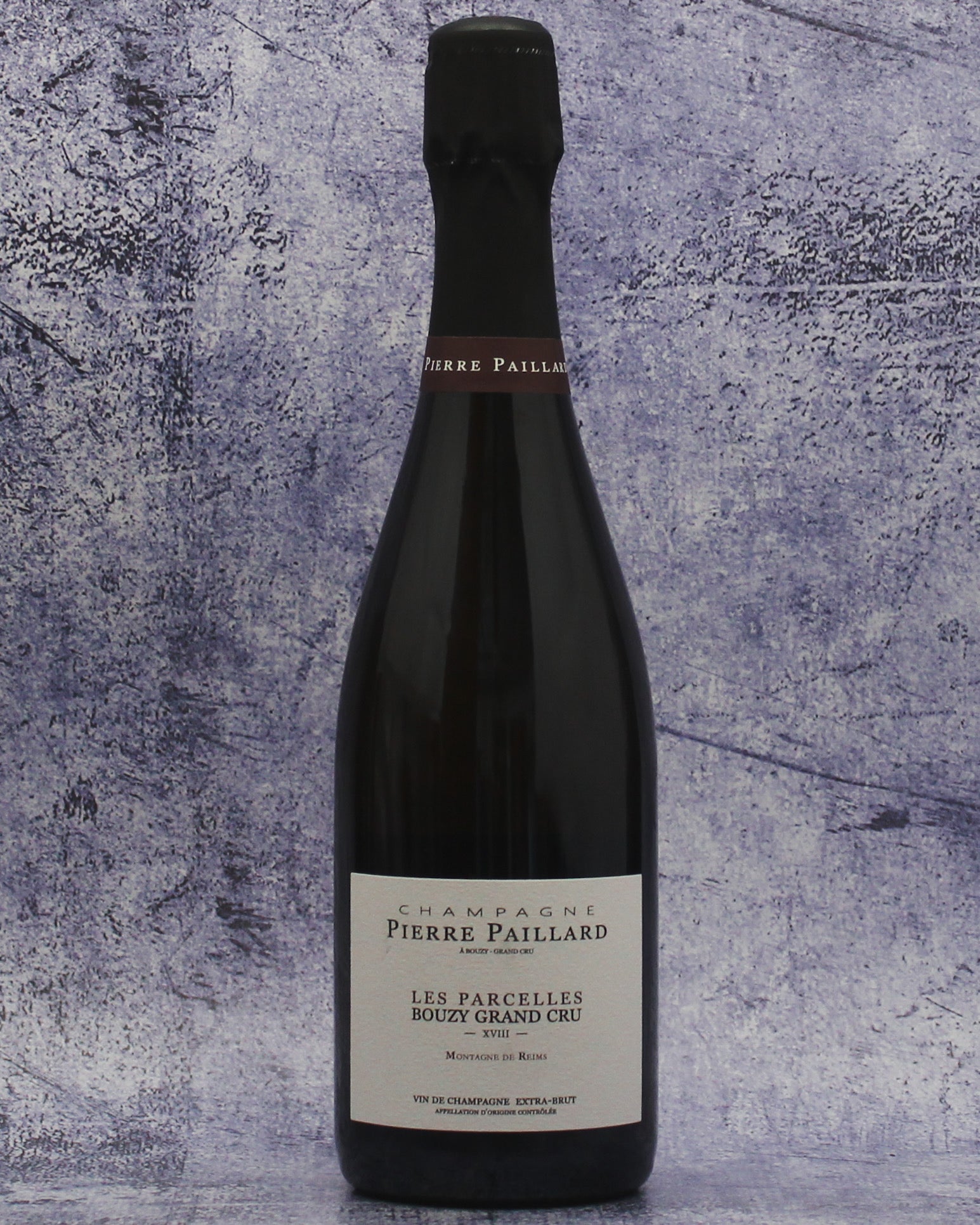Details:
Product Details
| Country: | France |
|---|---|
| Region: | Champagne |
| Sub-Region: | Montagne de Reims |
| Appellation: | Champagne AOC |
| Classification: | Grand Cru, Extra Brut |
| Site / Terroir: | Bouzy |
| Grape(s): | Pinot Noir, Chardonnay |
| Wine Style: | Sparkling, Champagne |
| Composition: | Blend |
| Practices: | Practicing Organic, Sustainable Viticulture, Low Intervention |
From: Bouzy, Montagne des Reims, Champagne, France
Varietals: 80% Pinot Noir, 20% Chardonnay
Tasting Notes: "Disgorged in July 2021 with one gram per liter dosage, Paillard's NV Extra-Brut Bouzy Grand Cru Les Parcelles XVII is based on the 2017 vintage. Offering up aromas of lemon oil, nectarine, freshly baked bread and hints of honeycomb, it's medium to full-bodied, deep and vinous, with a layered core of fruit, racy acids and a saline, bone-dry finish. Complemented by an elegant pinpoint mousse, this is a classy, impeccably balanced wine that transcends the challenging vintage." –Wine Advocate, 92 points (Jan 2022)
Pairing: I have a secret love for peanut butter and jelly sandwiches with champagne’s like this (Pinot Noir dominant champagne) & recommend to try the pairing if you’re up for it. In the case that you’re not, champagne’s such as this are fantastic with mushroom and fried chicken dishes. So, for today’s pairing, we’re sharing a one-pot combination of the two in Mark Bittman’s recipe for Creamy One-Pot Pasta with Chicken and Mushrooms. This recipe will yield 4 servings, and takes about 45 minutes to make.
About. Quentin’s grandfather established the Pierre Paillard brand in 1946, but wines had been made by at least six generations of the family before that. Bouzy, the splendidly-named village on the Montagne de Reims famed for making still Pinot Noir as well as fine Champagne, is their home as well as the focus for all their vinous activity. Here, you’ll find the brothers producing single-village Grand Cru Champagne from a variety of climats (vine plots), all vinified separately.
Paillard tells me that Bouzy is not your average Champagne village. ‘Most villages often have one or two producers and the rest is sold to larger houses,’ he says. ‘You come to Bouzy, and you have maybe about 30 producers who each have their own press, which is a rare thing in the Champagne landscape.’
Bouzy is and has long been an especially favored village because of its south-facing amphitheater of vineyards, descending from near the summit of the Montagne de Reims. Pinot Noir has always ripened more consistently here than almost anywhere else in Champagne. But there is also a fair bit of Chardonnay in Bouzy, and some Meunier too.
Following on from the work of their father Benoît, it’s clear that Quentin Paillard and his brother Antonie have done some serious research into soil types, exposures and grape varieties – as well as cellarwork involving different sizes of oak barrels. His thinking on all of these aspects is refreshingly unsuperficial and far removed from the orthodoxies of the big houses.
“The prime marker of flavor is the chalk”
For a start, he believes soil to have the biggest influence on the resulting flavor in the glass. ‘The prime marker is the chalk,’ Paillard asserts. ‘The grape varietal is overshadowed by that.’
Bouzy was always known for making really powerful and rich still and sparkling wines that were appreciated in Paris, says Paillard. That power and richness is ‘balanced out with the chalk’.
He continues: ‘That’s why it’s essential, especially in Bouzy, to have a healthy working soil, so that the root system doesn’t stay in the topsoil, which is clay-rich.’ He asserts that in order to promote a ‘mineral, bright component’ to the Paillard wines, working the soil is essential. ‘That’s really important for south-facing vineyards, to keep a certain elegance [to the wines].’
Paillard believes those south-facing slopes in Bouzy are too warm for Chardonnay; the winery will keep some Chardonnay in east- and north-facing parcels but the emphasis will be more and more on Pinot.
“straw gold in color, with richness and biscuity, toasty aromas”
As such, Les Parcelles is made from eighty percent Pinot Noir and twenty percent Chardonnay. The Pierre Paillard standard non-vintage Brut is, as its name suggests, made from a blend of parcels – no less than 22 – spread across Bouzy. It’s straw gold in colour, with richness and biscuity, toasty aromas. After a soft entry, the impression on the palate is long, full and fine. This is seriously impressive for an ‘entry level’ Champagne, and despite what Paillard says about chalk trumping variety, the Chardonnay adds significant finesse. ‘We never stop the malolactic fermentation,’ says Quentin, ‘and we use very low levels of sulphur.’ As a result, the backbone of acidity in the wine is evident but ripe.
Taste Block
Tasting Notes
Critical Acclaim:

